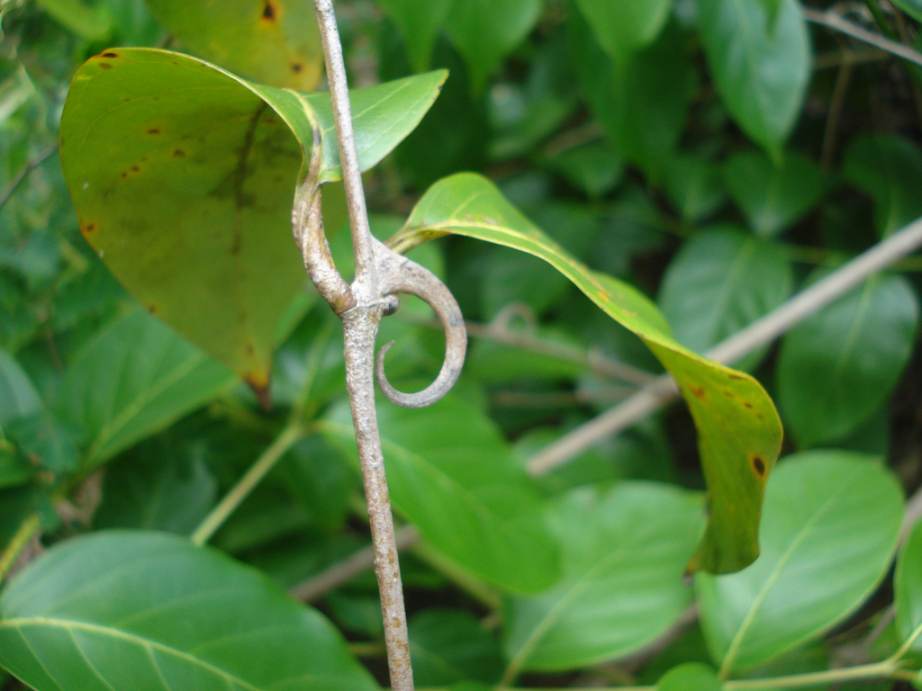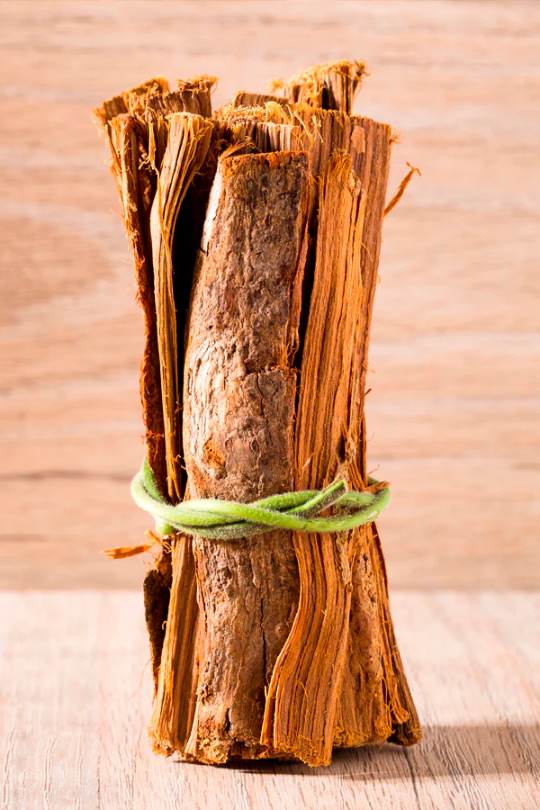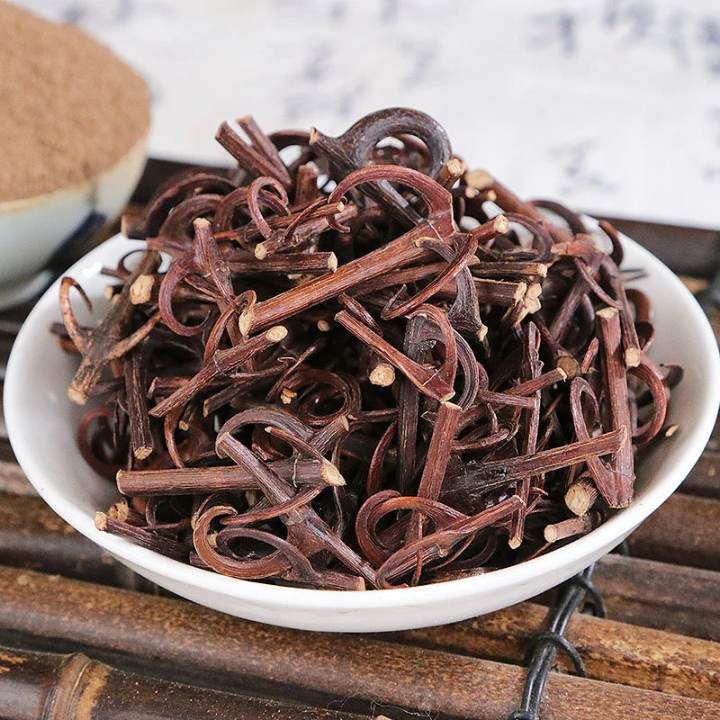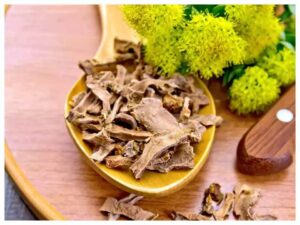The Mysterious Discovery of Cat’s Claw
A Chance Encounter with an Ancient Remedy
The discovery of Cat’s claw, also known as Uncaria tomentosa, is shrouded in mystery and intrigue. Legend has it that it was first used by the indigenous peoples of the Amazon rainforest, who observed wild cats chewing on the plant’s thorny vines to sharpen their claws. These people, known as the Ashaninka and other tribes, have been using Cat’s claw for thousands of years as a medicinal herb to treat a variety of ailments. However, it wasn’t until the 1970s that the plant caught the attention of Western scientists.
The Search for the Source
At the time, a group of American scientists was searching for a cure for cancer. They had heard rumors of a mysterious plant that was being used by the indigenous peoples of the Amazon rainforest to treat various diseases, including cancer. Intrigued, they set out on a journey deep into the jungle, in search of this elusive plant.
The Difficult Quest
Their journey was perilous and fraught with danger. They had to navigate through dense jungle, cross treacherous rivers, and battle swarms of mosquitoes and other insects. Many members of the expedition fell ill or were injured, and some even lost their lives. However, their determination and perseverance paid off when they finally stumbled upon the plant they had been searching for.
The Discovery of the Healing Properties
Upon examining the plant, the scientists were amazed to discover its healing properties. They found that it contained powerful antioxidants, anti-inflammatory agents, and immune-boosting compounds. They also discovered that it had anti-tumor properties, which made it a promising candidate for cancer treatment.
The Studies Begin
Excited by their discovery, the scientists brought samples of the plant back to their laboratories in the United States, where they began conducting extensive studies on its medicinal properties. They found that it was effective in treating a variety of diseases, including arthritis, ulcers, and infections. They also discovered that it had powerful anti-inflammatory effects, which made it useful for treating conditions such as asthma and allergies.
The Commercialization of Cat’s Claw
As news of the plant’s healing properties spread, interest in it grew, and soon, companies began commercializing it. Today, Cat’s claw is widely available in the form of supplements, teas, and extracts, and is used by millions of people worldwide to treat a variety of ailments.
The Mystery Continues
Despite the extensive research that has been conducted on Cat’s claw, many of its properties and effects remain a mystery. Scientists are still trying to unlock the plant’s full potential and understand how it works. However, one thing is clear: the discovery of Cat’s claw is a testament to the power of nature and the wisdom of ancient cultures.
Conclusion
The discovery of Cat’s claw is a story of adventure, perseverance, and discovery. It is a testament to the ingenuity and resourcefulness of scientists and the wisdom of ancient cultures. Today, Cat’s claw is a popular and effective natural remedy that is used by millions of people worldwide to treat a variety of ailments. However, the mystery of its healing properties continues to fascinate and perplex scientists, who are still trying to unlock the plant’s full potential.

The Many Health Benefits of Cat’s Claw
A Powerful Medicinal Herb
Cat’s claw, also known as Uncaria tomentosa, is a medicinal herb that has been used for thousands of years by the indigenous peoples of the Amazon rainforest. It is known for its powerful healing properties and is used to treat a wide range of health conditions.
Boosting the Immune System
One of the most well-known benefits of Cat’s claw is its ability to boost the immune system. It contains compounds called alkaloids, which have been shown to stimulate the production of white blood cells and enhance the body’s natural defenses against infections and disease.
Fighting Infections
Cat’s claw has also been shown to have strong antimicrobial properties, which make it effective in fighting a variety of infections. It has been used to treat bacterial and viral infections, including the flu, colds, and even HIV.
Reducing Inflammation
Inflammation is a natural response that the body has to injury and infection. However, when inflammation becomes chronic, it can lead to a variety of health problems, including arthritis, heart disease, and cancer. Cat’s claw has been shown to have powerful anti-inflammatory properties, which make it an effective natural remedy for reducing inflammation and preventing these types of health problems.
Treating Arthritis
Arthritis is a common condition that affects millions of people worldwide. It is characterized by inflammation and pain in the joints, which can be debilitating. Cat’s claw has been shown to be an effective natural remedy for treating arthritis. It contains compounds that help to reduce inflammation and pain in the joints, which can provide relief for those suffering from this condition.
Supporting Digestive Health
Cat’s claw has also been shown to have a positive effect on digestive health. It has been used to treat a variety of digestive problems, including ulcers, gastritis, and irritable bowel syndrome (IBS). It has also been shown to help improve the overall health of the digestive system, by promoting the growth of beneficial bacteria in the gut.
Promoting Cardiovascular Health
Cat’s claw has been shown to have a positive effect on cardiovascular health. It can help to lower blood pressure and cholesterol levels, which can reduce the risk of heart disease. It also contains antioxidants, which can help to protect the heart and blood vessels from damage.
Supporting Mental Health
Cat’s claw has also been shown to have a positive effect on mental health. It has been used to treat anxiety and depression, and can help to improve overall mood and wellbeing. It has also been shown to have a calming effect on the nervous system, which can help to reduce stress and anxiety.
Fighting Cancer
One of the most exciting benefits of Cat’s claw is its potential for fighting cancer. It contains compounds that have been shown to have anti-tumor properties, and has been studied for its potential as a natural cancer treatment. While more research is needed, the results so far are promising.
Supporting Skin Health
Cat’s claw has also been shown to have a positive effect on skin health. It contains antioxidants, which can help to protect the skin from damage and premature aging. It has also been used to treat a variety of skin conditions, including acne, eczema, and psoriasis.
Improving Overall Health and Wellbeing
In addition to its specific health benefits, Cat’s claw has also been shown to improve overall health and wellbeing. It can help to boost energy levels, improve cognitive function, and promote a sense of calm and relaxation.
Conclusion
Cat’s claw is a powerful medicinal herb that has been used for thousands of years by the indigenous peoples of the Amazon rainforest. It has a wide range of health benefits, including boosting the immune system, fighting infections, reducing inflammation, treating arthritis, supporting digestive health, promoting cardiovascular health, supporting mental health, fighting cancer, and improving skin health.
While more research is needed to fully understand its potential, Cat’s claw is a promising natural remedy that can help to improve overall health and wellbeing. It is available in many forms, including supplements, teas, and extracts, and is generally safe for most people to use.
However, as with any herbal remedy, it is important to speak with a healthcare professional before using Cat’s claw, especially if you have a pre-existing medical condition or are taking any medications. Some potential side effects of Cat’s claw include nausea, dizziness, and diarrhea.
In conclusion, Cat’s claw is a powerful and versatile herb that offers a wide range of health benefits. From boosting the immune system to fighting cancer, this plant has the potential to improve many aspects of health and wellbeing. While more research is needed to fully understand its potential, Cat’s claw is a promising natural remedy that can be used safely and effectively by those looking to improve their health.
Understanding the Nutritional Components and Core Ingredients of Cat’s Claw
Introduction
Cat’s claw, also known as Uncaria tomentosa, is a medicinal plant that has been used for thousands of years by the indigenous peoples of the Amazon rainforest. It is known for its powerful healing properties and is used to treat a wide range of health conditions. In this article, we will explore the nutritional components and core ingredients of Cat’s claw and how they contribute to its health benefits.
Nutritional Components
Cat’s claw contains a variety of nutritional components that are important for maintaining good health. These include:
- Alkaloids: Cat’s claw contains several alkaloids, including oxindole alkaloids and quinovic acid glycosides. These compounds are responsible for many of the plant’s medicinal properties, including its immune-boosting and anti-inflammatory effects.
- Polyphenols: Cat’s claw is rich in polyphenols, which are powerful antioxidants that help to protect the body from damage caused by free radicals. Polyphenols have been shown to have a variety of health benefits, including reducing the risk of heart disease and cancer.
- Triterpenoids: Cat’s claw also contains triterpenoids, which have been shown to have anti-inflammatory and anti-tumor properties. These compounds are also thought to help support digestive health.
- Flavonoids: Flavonoids are another type of antioxidant that is found in Cat’s claw. They help to protect the body from damage caused by oxidative stress and have been shown to have a variety of health benefits, including reducing the risk of heart disease and cancer.
- Sterols: Cat’s claw contains several types of sterols, including beta-sitosterol and stigmasterol. These compounds have been shown to have anti-inflammatory and immune-boosting properties.
Core Ingredients
In addition to its nutritional components, Cat’s claw also contains several core ingredients that are responsible for its medicinal properties. These include:
- Uncarine: Uncarine is a type of alkaloid that is found in Cat’s claw. It has been shown to have immune-boosting and anti-inflammatory properties, and may also have anti-cancer effects.
- Procyanidins: Procyanidins are a type of polyphenol that is found in Cat’s claw. They have been shown to have antioxidant and anti-inflammatory properties, and may also help to support cardiovascular health.
- Quinovic acid glycosides: Quinovic acid glycosides are another type of alkaloid that is found in Cat’s claw. They have been shown to have anti-inflammatory and anti-tumor properties, and may also help to support digestive health.
- Pteropodine: Pteropodine is a type of alkaloid that is found in Cat’s claw. It has been shown to have anti-inflammatory and immune-boosting properties, and may also have anti-cancer effects.
Conclusion
Cat’s claw is a powerful medicinal plant that contains a variety of nutritional components and core ingredients that contribute to its health benefits. From alkaloids and polyphenols to triterpenoids and flavonoids, this plant is rich in compounds that have been shown to have immune-boosting, anti-inflammatory, and anti-cancer properties. Whether used to support digestive health, treat arthritis, or fight infections, Cat’s claw is a versatile and effective natural remedy that can help to improve many aspects of health and wellbeing.
Methods for Consuming Cat’s Claw
Tea
One of the most popular ways to consume Cat’s claw is by brewing it as a tea. To make Cat’s claw tea, simply steep one teaspoon of dried Cat’s claw in one cup of hot water for 5-10 minutes. You can also add other herbs or sweeteners to the tea to enhance its flavor.
Cat’s claw tea is a great way to enjoy the plant’s health benefits, as it allows you to consume it in a natural and unprocessed form. It is also a simple and convenient method of consumption, as it can be easily prepared at home or on-the-go.
Capsules and Tablets
Another common method for consuming Cat’s claw is in the form of capsules or tablets. These are typically sold in health food stores and online, and come in various dosages and strengths.
Capsules and tablets are a convenient way to consume Cat’s claw, as they are easy to take and do not require any preparation. However, it is important to choose a reputable brand and to follow the dosage instructions carefully.
Tinctures and Extracts
Tinctures and extracts are another popular method for consuming Cat’s claw. These are typically sold in health food stores and online, and come in various strengths and formulations.
Tinctures and extracts are made by soaking Cat’s claw in alcohol or another solvent, which extracts the plant’s active compounds. They are then typically diluted in water or another liquid and taken orally.
Tinctures and extracts are a potent and concentrated form of Cat’s claw, and are often used for more serious health conditions. However, it is important to choose a reputable brand and to follow the dosage instructions carefully.
Powders
Cat’s claw powder is another option for consumption. This is typically made by grinding the dried plant material into a fine powder.
Powders can be mixed into drinks or food, making them a versatile and easy method of consumption. However, it is important to choose a high-quality and pure powder to ensure that you are getting the full benefits of the plant.
Topical Applications
In addition to oral consumption, Cat’s claw can also be applied topically to the skin. This is typically done by using a cream or lotion that contains Cat’s claw extract.
Topical applications of Cat’s claw are often used to treat skin conditions such as acne, eczema, and psoriasis. However, it is important to choose a reputable brand and to follow the instructions carefully to avoid any adverse effects.
Choosing the Best Method for Your Needs
When choosing a method for consuming Cat’s claw, it is important to consider your individual needs and preferences. Some factors to consider include:
- The specific health condition you are trying to treat
- Your tolerance for different forms of consumption
- Your lifestyle and daily routine
It is also important to choose a reputable brand and to follow the dosage instructions carefully to ensure that you are getting the full benefits of the plant.

Potential Side Effects and When to Avoid Taking Cat’s Claw
Potential Side Effects
Some potential side effects of Cat’s claw include:
- Nausea: Cat’s claw may cause nausea or stomach upset in some people, especially when taken in large doses.
- Dizziness: Cat’s claw may cause dizziness or lightheadedness in some people, especially when taken in large doses.
- Diarrhea: Cat’s claw may cause diarrhea or loose stools in some people.
- Allergic reactions: Some people may be allergic to Cat’s claw, and may experience symptoms such as itching, hives, or swelling.
It is important to note that these side effects are relatively rare, and most people are able to use Cat’s claw without experiencing any adverse effects. However, if you do experience any of these symptoms, it is important to stop taking Cat’s claw and speak with a healthcare professional.
When to Avoid Taking Cat’s Claw
While Cat’s claw is generally considered safe for most people to use, there are some situations where it should be avoided. These include:
- Pregnancy and breastfeeding: There is not enough research to determine the safety of Cat’s claw during pregnancy or breastfeeding. As a precaution, it is generally recommended that women avoid using Cat’s claw during these times.
- Surgery: Cat’s claw may increase the risk of bleeding during and after surgery. If you are scheduled for surgery, it is important to stop using Cat’s claw at least two weeks before the procedure.
- Autoimmune diseases: Cat’s claw may stimulate the immune system, which can be a problem for people with autoimmune diseases such as multiple sclerosis or rheumatoid arthritis. If you have an autoimmune disease, it is important to speak with a healthcare professional before using Cat’s claw.
- Bleeding disorders: Cat’s claw may increase the risk of bleeding in people with bleeding disorders such as hemophilia. If you have a bleeding disorder, it is important to speak with a healthcare professional before using Cat’s claw.
- Transplant recipients: Cat’s claw may stimulate the immune system, which can be a problem for people who have had organ transplants and are taking immunosuppressive medications. If you have had an organ transplant, it is important to speak with a healthcare professional before using Cat’s claw.






